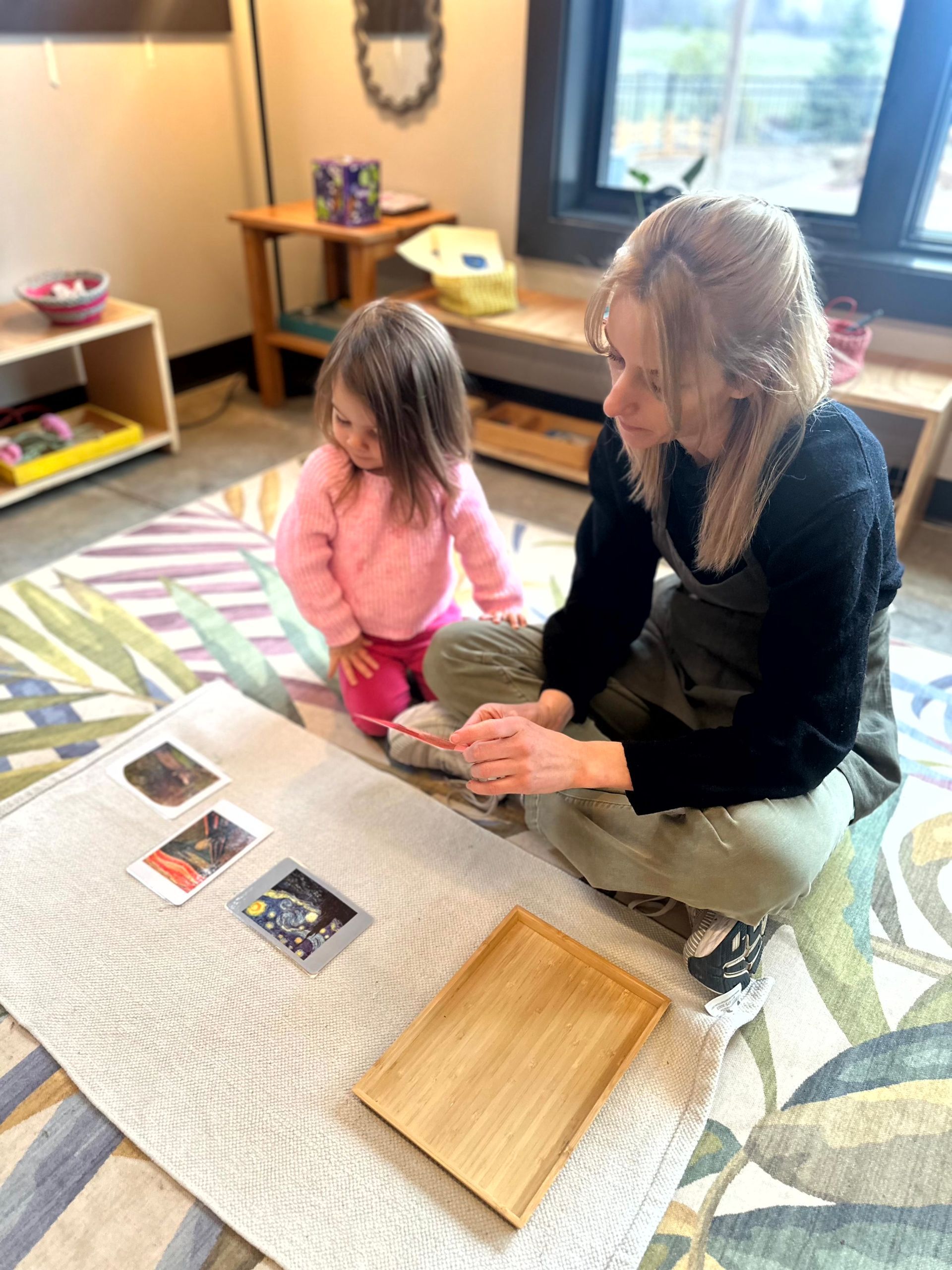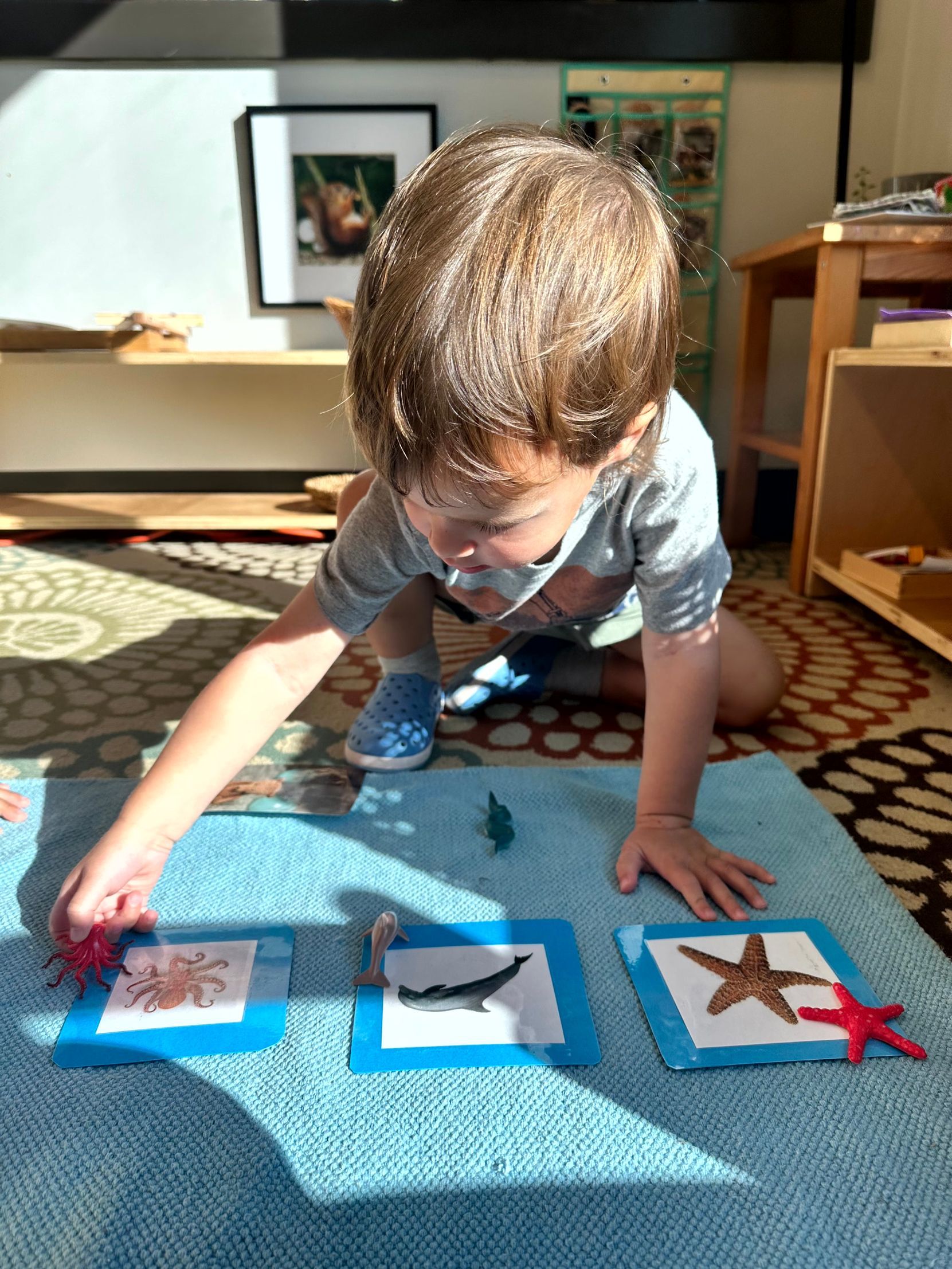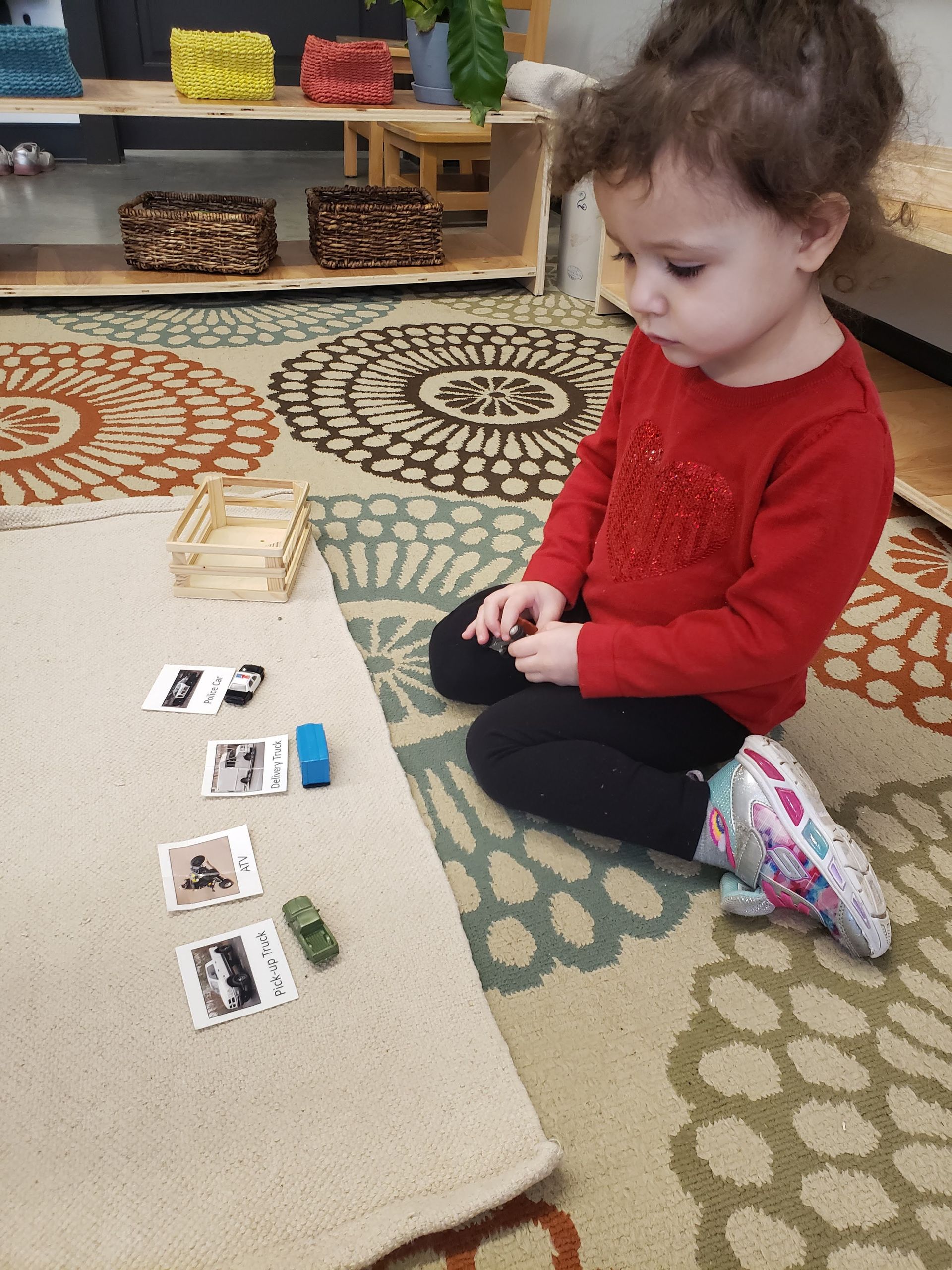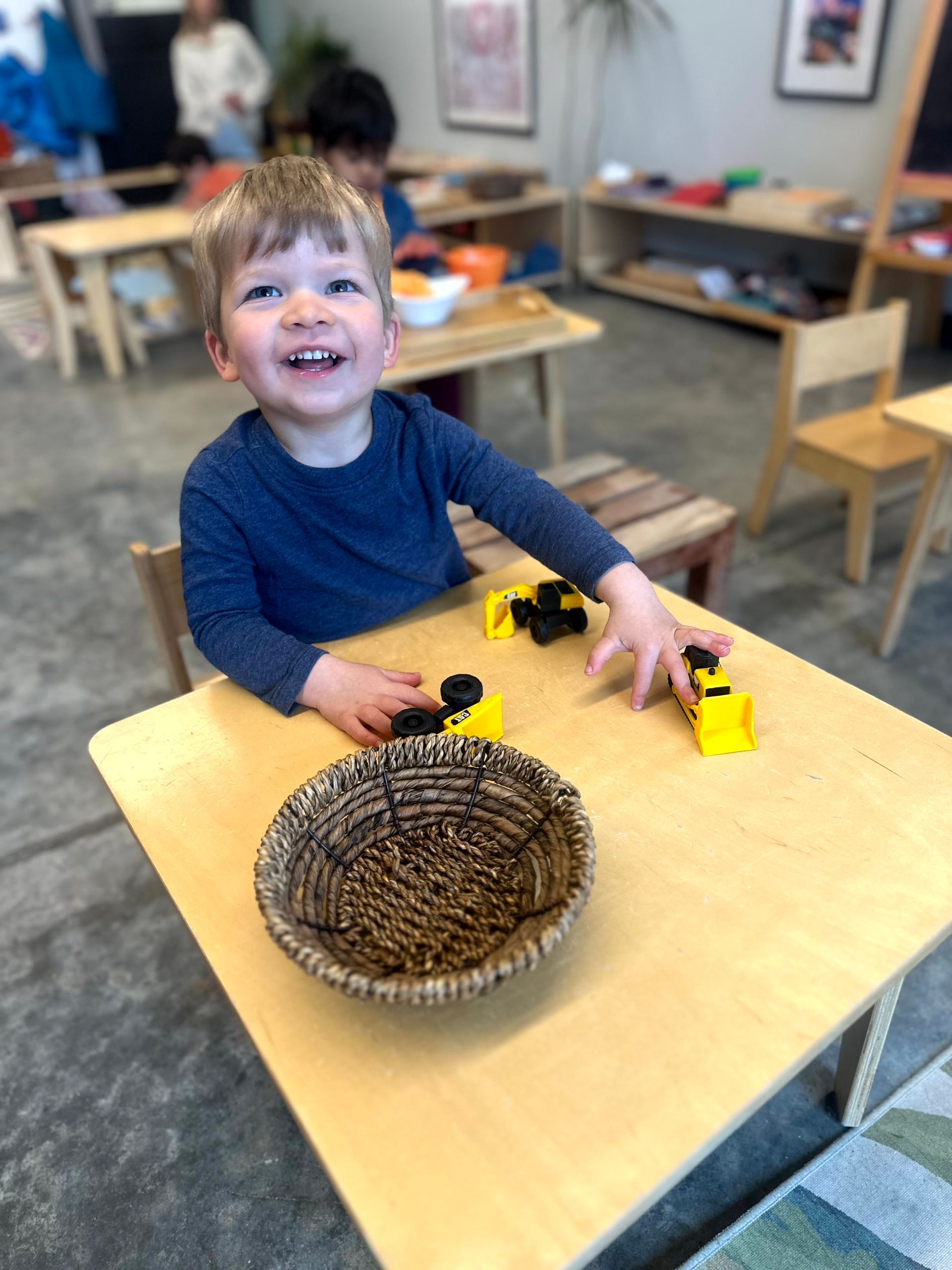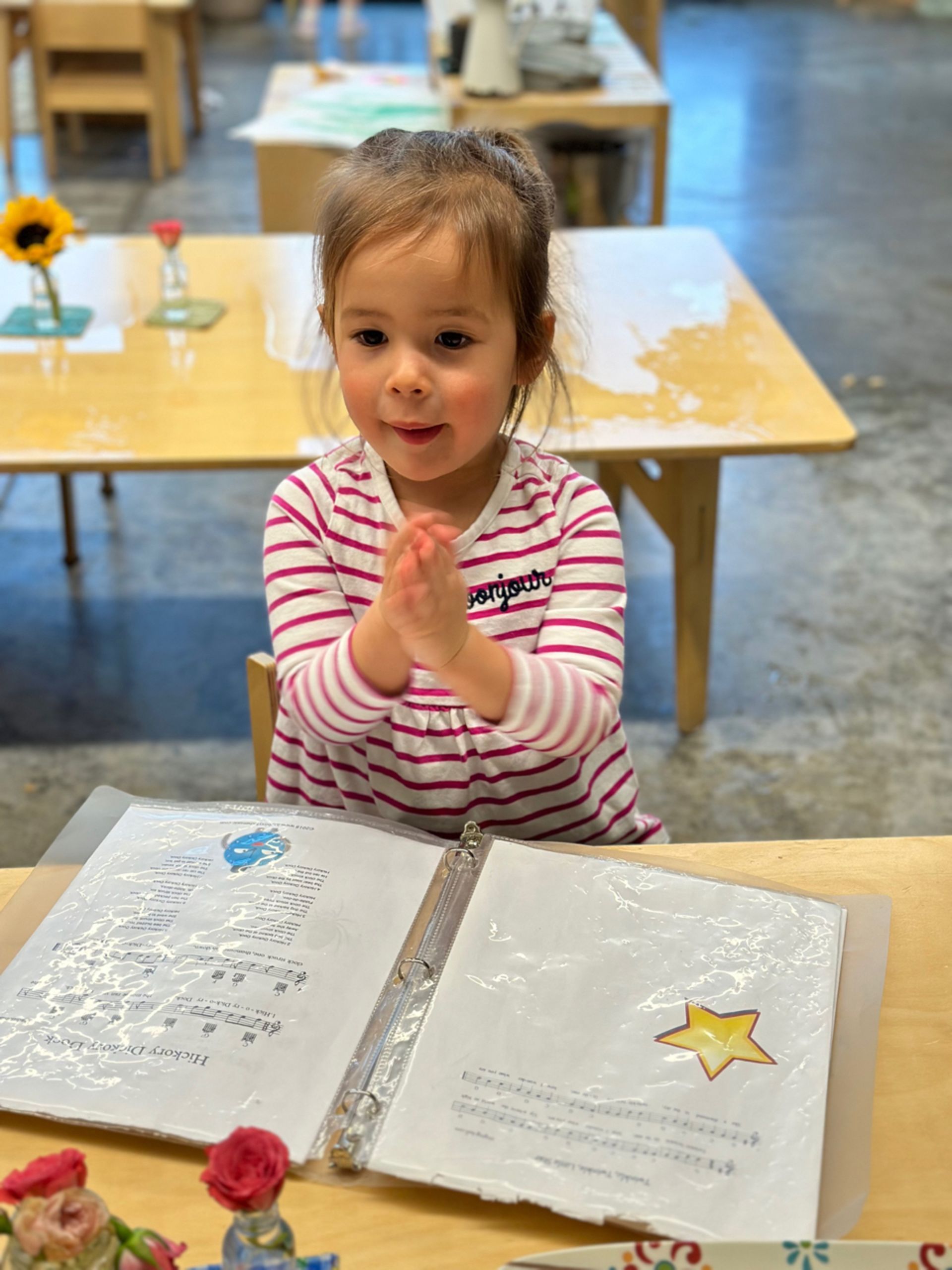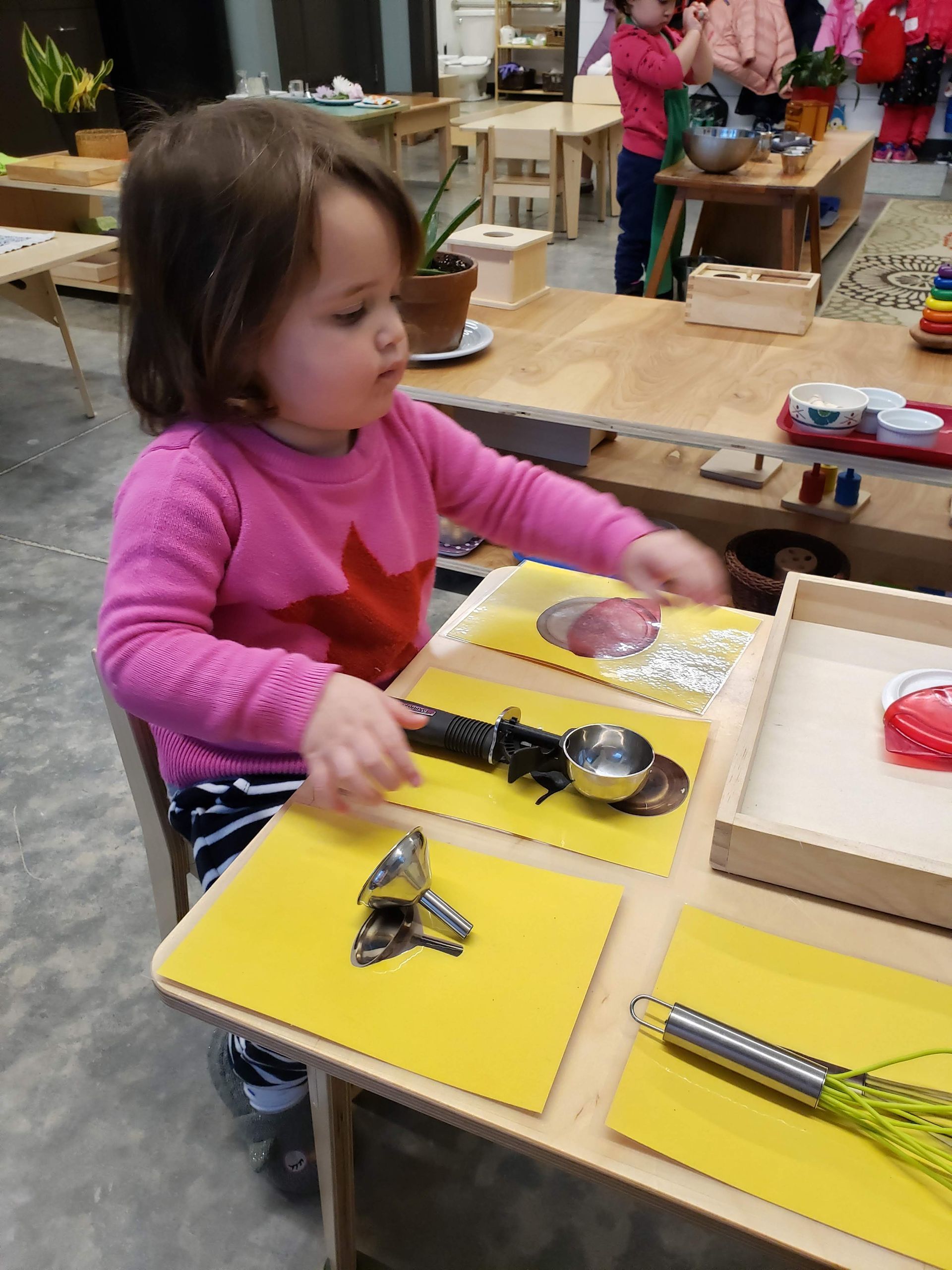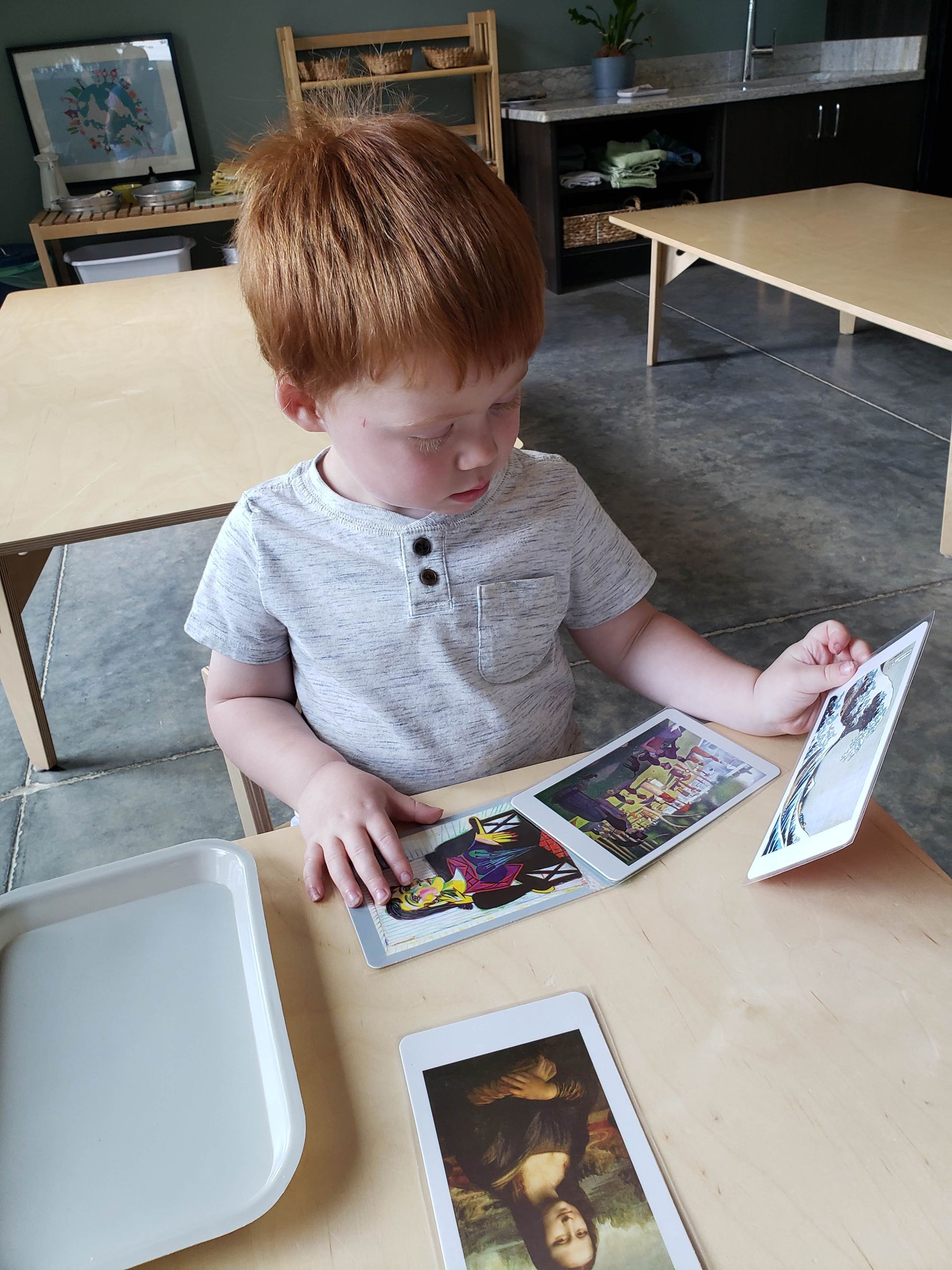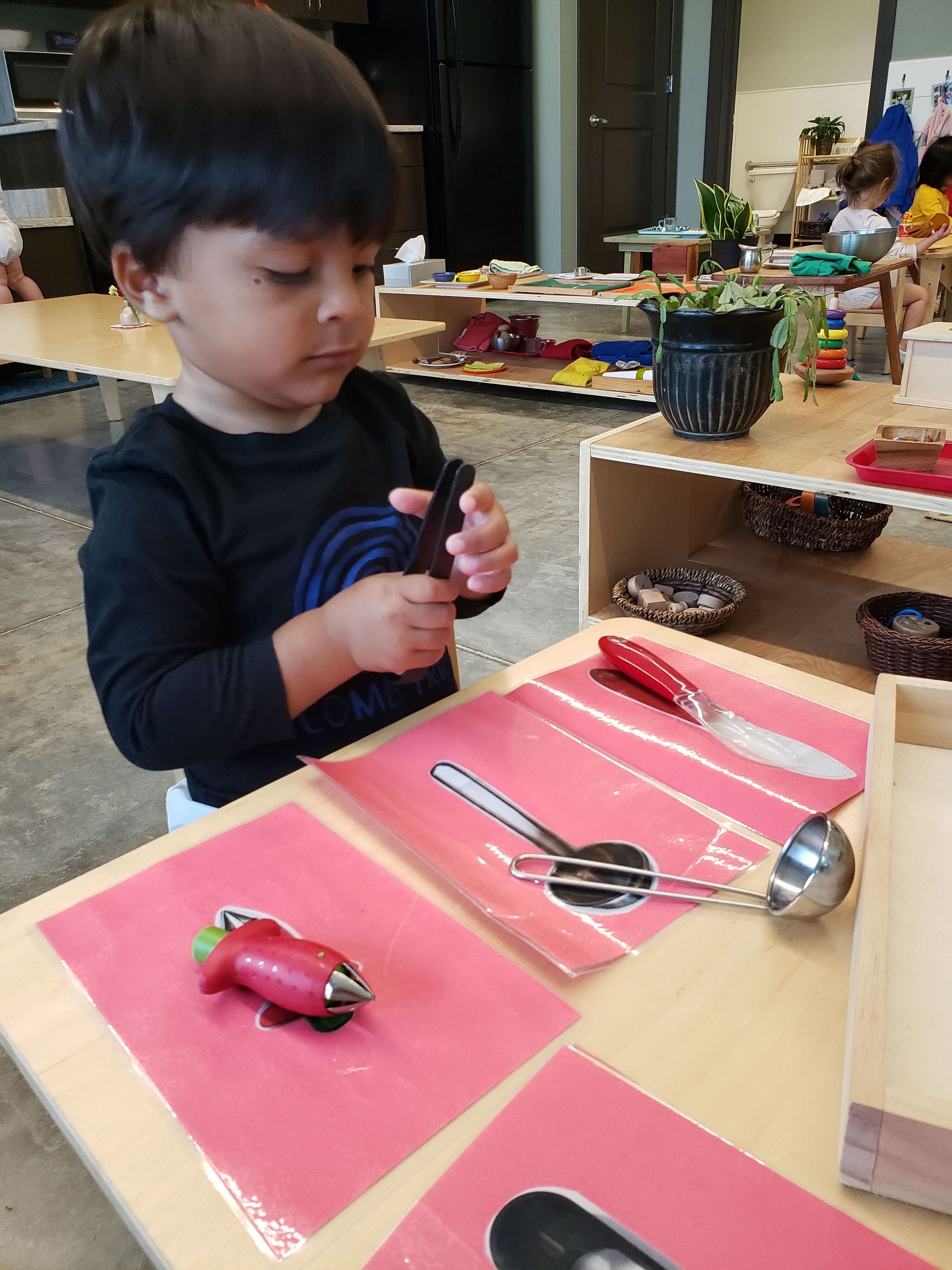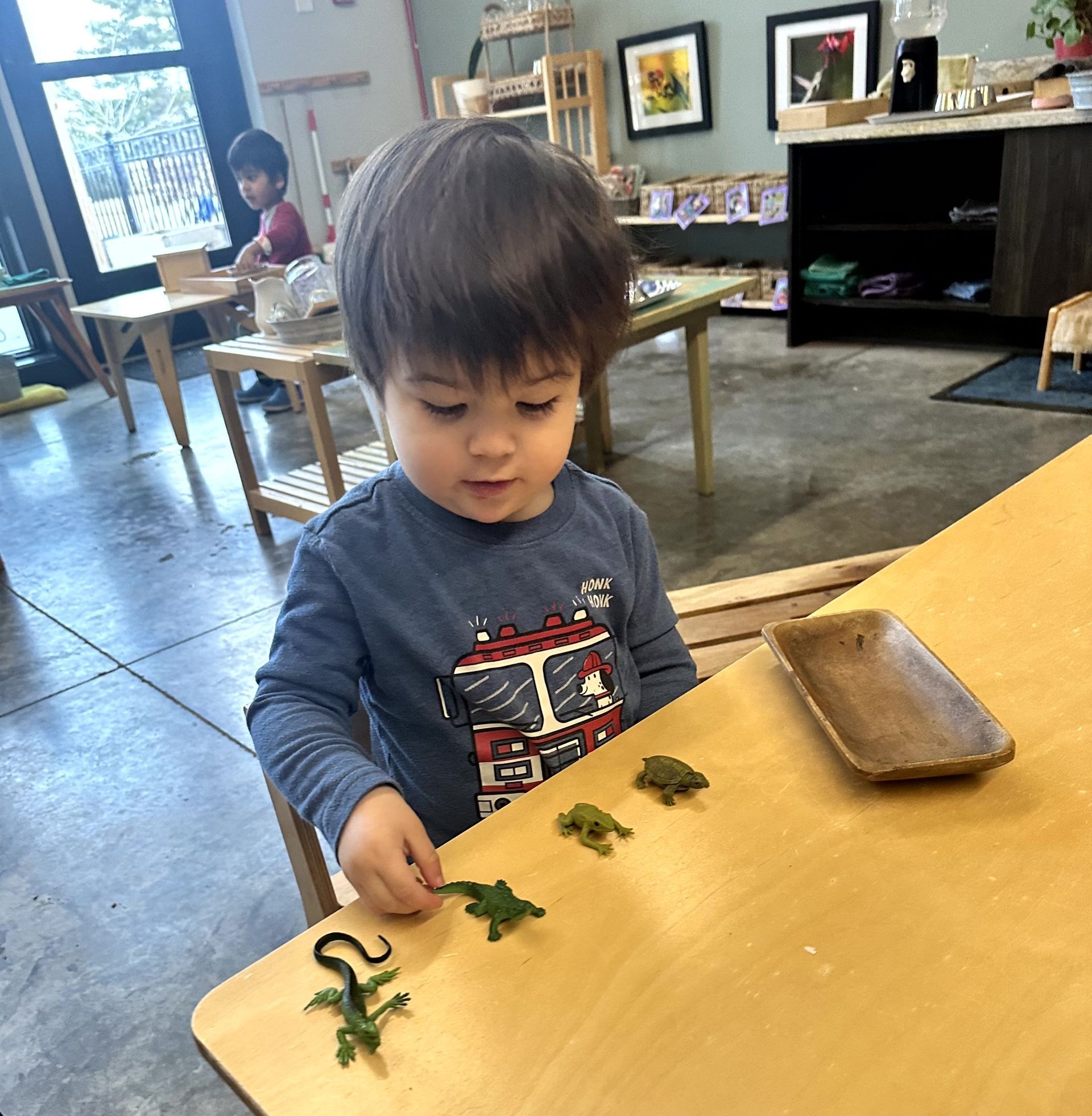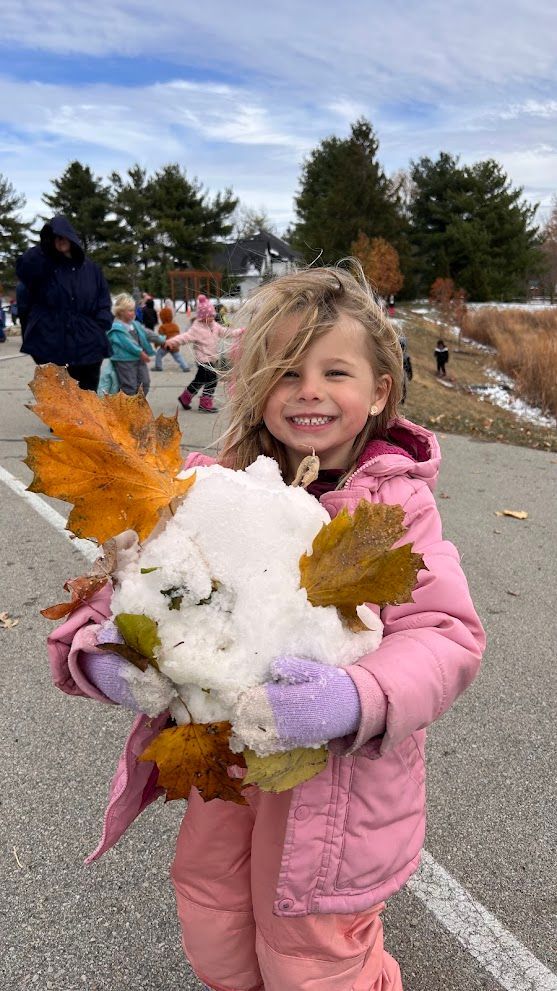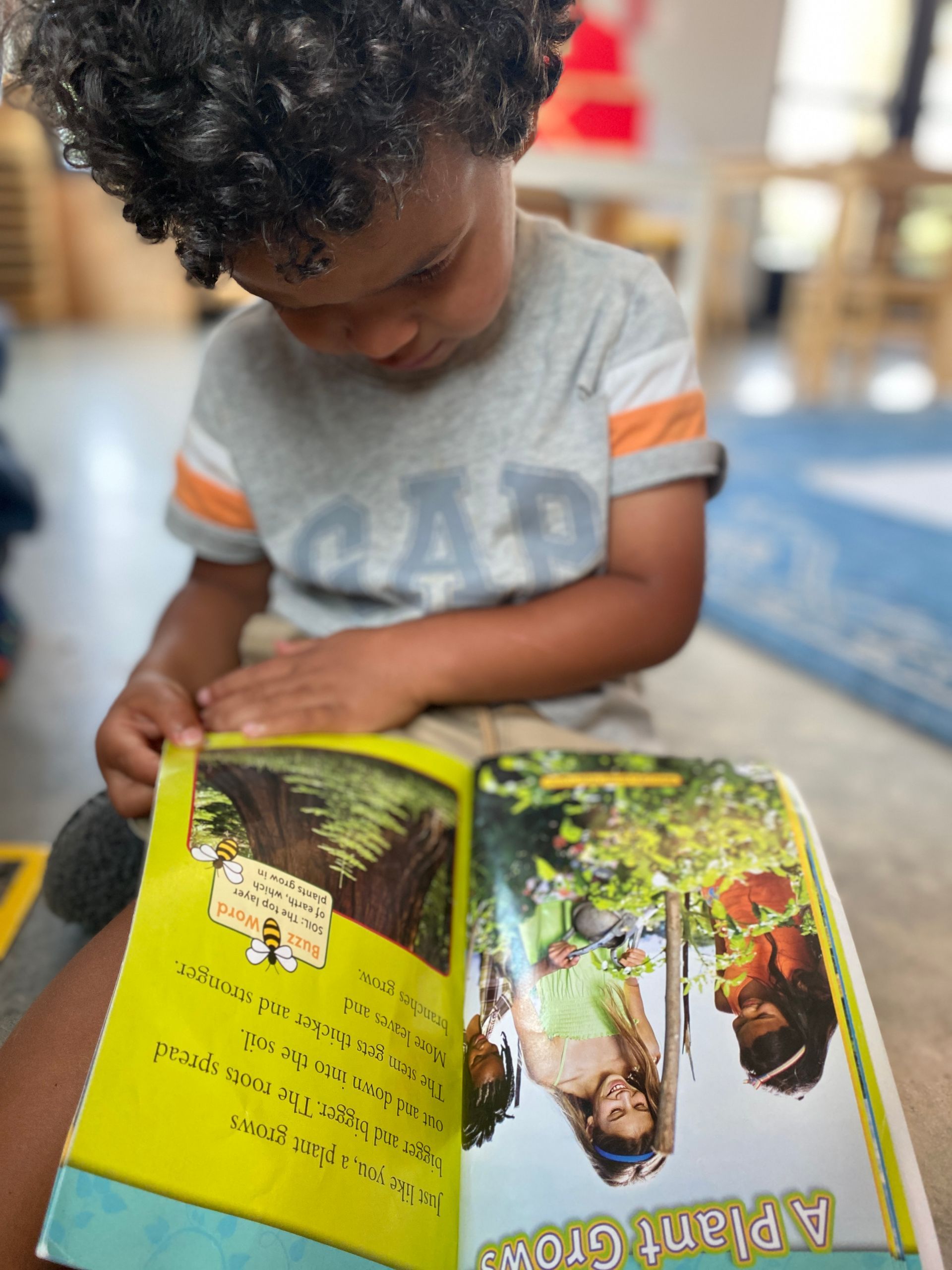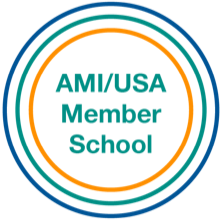"The more the child is absorbed in the world around him, the more he will be able to give expression to the things he has learned."
MARIA MONTESSORI
Language development is a key focus in the Montessori toddler classroom, where rich conversation, purposeful materials, and thoughtful activities create an environment that nurtures communication skills. During the toddler years, children experience what Dr. Maria Montessori called the “sensitive period for language” — a time when their minds are especially receptive to building vocabulary, speech patterns, and social communication.
The Montessori Approach to Language Progression
In Montessori, language development unfolds naturally through exposure, interaction, and exploration. The environment is designed to immerse children in meaningful experiences, fostering both spoken and early literacy skills. Importantly, every lesson and interaction is a language lesson. Whether through practical life work, sensorial exploration, or cultural lessons, children are constantly absorbing, practicing, and refining their communication.
Key Materials and Activities for Language Development
Real Objects and Replicas
Toddlers are first introduced to precise vocabulary through real, tangible objects such as fruit, hairbrushes, or baking tools. As they progress, replicas (scaled-down models of animals, insects, vehicles, etc.) are added. Both serve the purpose of enriching language, but replicas introduce the skill of abstraction, preparing children to move from the concrete world toward more symbolic and representational thinking.
Classified Cards and Matching Activities
Cards play a central role in Montessori language work. Children begin with exact matching — pairing an object with an identical card — and later move to similar matching, such as pairing a real apple with a card showing an illustration of an apple. This gradual progression supports the development of abstraction.
Cards can also stand alone as lessons, representing objects, landmarks, cultural artifacts, or even things children cannot directly encounter in their daily environment. In this way, cards support vocabulary growth, cultural knowledge, and abstract thinking simultaneously.
Books and Storytelling
Books in the Montessori classroom are carefully chosen for their rich language, realistic illustrations, and meaningful content. Reading aloud strengthens vocabulary, nurtures listening skills, and fosters a love for storytelling. Books also offer children opportunities to:
- Connect with people beyond the “here and now.”
- Encounter endless imaginative possibilities.
- Develop an aesthetic appreciation for illustrations.
- Experience peace, satisfaction, and emotional balance through stories.
- Explore perspectives and experiences they may not have in real life.
- In this way, books enrich not only language development but also emotional, spiritual, and cultural growth.
Rhythmic Language
Songs, rhymes, and poems are powerful tools for language development. Through rhythm and repetition, toddlers learn pronunciation, sentence structure, and the musicality of language. These activities also bring joy and movement into the classroom, making language practice lively and memorable.
Conversation and Social Interaction
Montessori guides model clear, respectful language in every interaction. They describe activities, guide children through tasks, and engage in dialogue with intention. Just as importantly, guides ask thoughtful questions, inviting children to think, respond, and build conversational confidence. This practice encourages both verbal expression and active listening.
Language in All Areas of the Classroom
Language work is not limited to a single shelf or subject. Every lesson, whether in practical life or psycho-sensory motor, is also a language lesson. When a child follows a sequence of instructions, names geometric solids, or learns vocabulary related to geography, they are developing language alongside other skills.
The Impact of a Language-Rich Environment
By immersing toddlers in an environment filled with conversation, rhythmic language, books, real and representational objects, and cultural materials, Montessori classrooms create a strong foundation for communication. This natural, hands-on approach empowers children to express themselves confidently, fosters independence, and prepares them for future literacy success.
Notably, during the sensitive period for language, children also have a remarkable ability to absorb more than one language. With the right exposure, toddlers can naturally build fluency in multiple languages. Verbal expression, in turn, grows out of their increasing independence and confidence—key outcomes of the Montessori approach.

